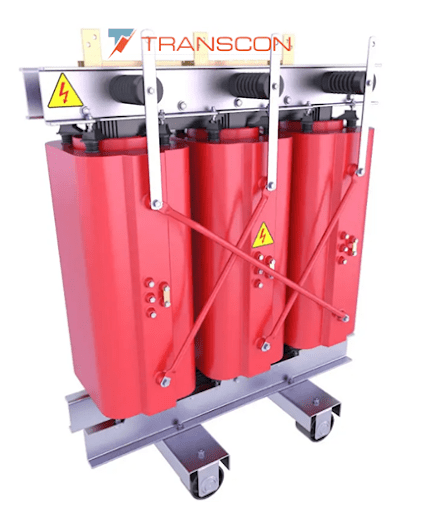Transformers play a crucial role in maintaining and regulating the voltage in any electrical power set-up right from generation to distribution. Its main function is to increase or decrease the voltage based on the power consumption levels of the connected device. While the overall purpose of any transformer remains the same throughout, it does come with various features and capabilities depending on the user's needs. Based on capacity and performance; it is usually categorized into three major groups which are domestic, commercial, and industrial transformers. The Dry-Type Distribution Transformer is one of the most popular and commonly used variants of transformers in the current scenario for all three major categories.
So, what is a Dry-Type Distribution Transformer?
In simple words, it’s a particular variant of a transformer which has no insulating liquid in its system. In other words, its winding core is not immersed in a liquid which is common place for other variants of transformers. The windings are sealed in a tank that is pressurized by air. Hence, the name; Dry-Type Distribution Transformer. This particular model is touted to be environment-friendly, lighter in comparison, and can handle variations in voltage effectively. Additionally, it is built to tackle the challenges of the current era which mainly revolves around effectively managing high-volume power generation and transmission across multiple locations.
This variant of transformer is also made to provide the highest levels of safety which has little or no comparison. Its body is built to withstand all forms of weather extremes and physical damages, it is corrosion-resistant, and has fail-safe mechanisms to prevent fire and explosion in case of damage in its internal components. There are two main variants of Dry-Type Distribution Transformer; Cast Resin Transformer and Vacuum Pressure Impregnated Transformer.
- The primary and secondary windings in a Cast Resin Transformer are insulated in epoxy resin which makes it perfect for areas which have high humidity or moisture. It can take heavy power loads in comparison to other transformers and does not lead to short circuits. They are particularly useful when the transformer needs to be fitted outside without the worry of rain or the sun. It usually comes in ratings of 25 KVA to 12,500 KVA.
- The windings in the Vacuum Pressure Impregnated Transformer are made in foils, discs, or strips so it can easily regulate the voltage to suit the devices connected. It works perfectly in moisture-prone areas. This transformer comes in a rating of 5KVA to 30MVA.
While both variants of Dry-Type Distribution Transformers have wide-ranging roles to perform, it is best to check with the systems engineer to understand which transformer will suit the user's requirements perfectly. Domestic and commercial variants usually come under low to medium power consumption while the industrial variant comes under the high-power consumption category. Failure to match these requirements correctly can have disastrous outcomes. While at other times, it can lead to the wastage of precious resources and effort.
Some of its advantages are:
- High safety standards
- Low maintenance
- Compact, lighter and easy installation
- Environment friendly
- High capacity to handle overloads
- No fire hazard
- Durable and resistant to all weather elements
Dry-Type Distribution Transformers find use in various applications such as
- Chemical, Oil and Gas industry
- Ecologically sensitive area
- Substations in city limits
- Indoor and underground substations
- Renewable energy generation
What makes this particular variant of the transformer a favourite in the market is its versatility and how easily it integrates new features and capabilities without compromising on its core objective; to deliver uninterrupted power to all connected users at all times.
© 2020. Transcon Industries. Powered by  | Digital Marketing Services.
| Digital Marketing Services.














